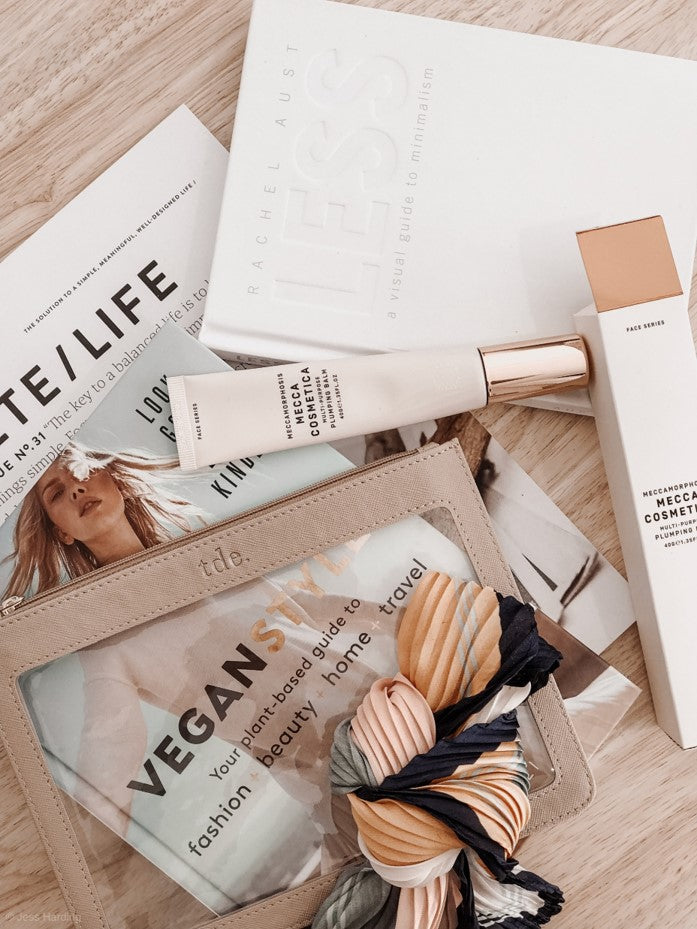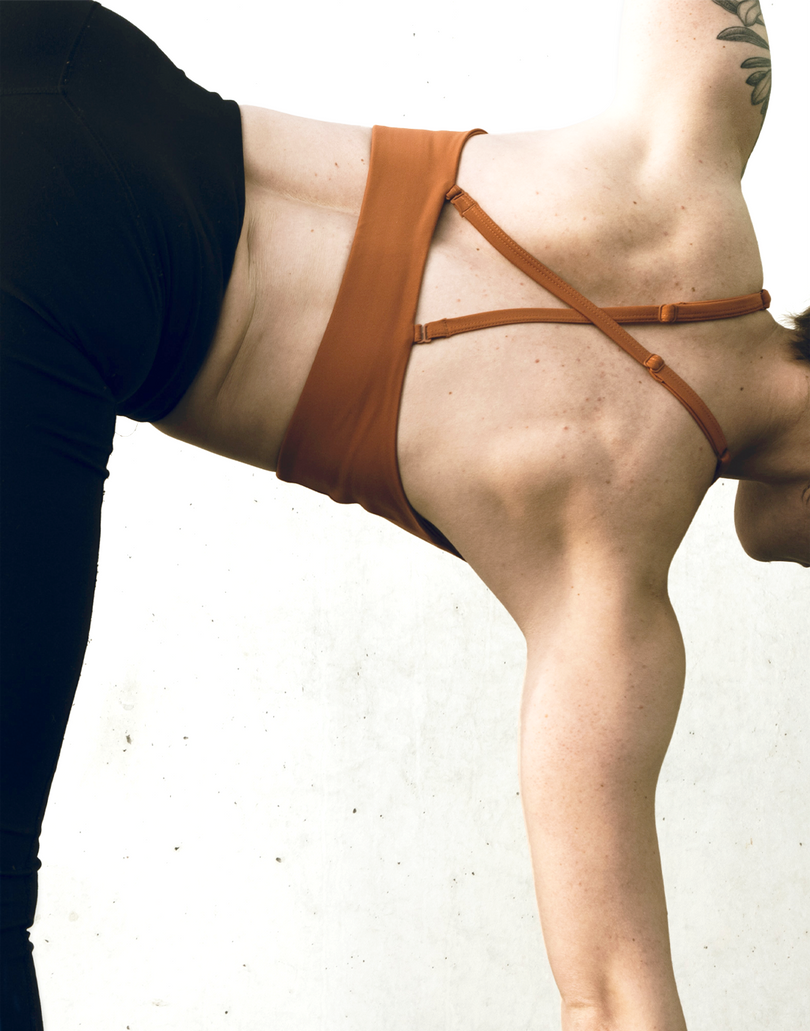Hair dyes are notorious for their formulas containing a crazy cocktail of chemicals. OSCEA has collected a list of the 5 Best Natural Hair Dyes to help you avoid these harmful chemicals. The Food, Drug, and Cosmetics Act of 1938 only requires food, drugs, and medical devices to have FDA approval- chemicals in the cosmetics industry are left completely unregulated. The law nor the FDA require any specific tests to demonstrate the safety of cosmetics products nor do they require companies to disclose safety information with the FDA. Manufacturers are not even required to register their cosmetics formulas with the FDA. The cosmetics industry is free to use thousands of synthetic chemicals that end up on and in consumers’ bodies. With hair coloring, these chemicals weaken and destroy hair over time, and also increase long-term risks of various forms of cancer and respiratory issues. The coloring agents used in permanent and semipermanent hair colors belong to a family of petroleum-derived chemicals known generally as coal tar dyes. Other hair coloring products use phenylenediamine dyes which are linked to breast cancer. Another concern is that many of these chemical colorants derive from environmentally harmful practices of processing oil and coal-based ingredients. What you put in your hair, is eventually absorbed into your bloodstream. Using organic, non toxic hair dyes is a good way to avoid some of these chemicals. Scroll down to check out OSCEA’s suggestions for the best natural hair dye below.
Toxic Ingredients Found in Hair Dyes To Stay Away From:
- Phenylenediamine (PPD): PPD is derived from coal-tar, which is allergenic and highly toxic. It is also linked to an increase in the frequency of potentially harmful mutations. PPD has been a leading chemical in hair dyes for decades. It effectively strips hair’s existing color, allowing the new color to take its place. PPD is also a carcinogen which means that exposure can lead to a variety of health complications like cancer, respiratory failure, and cardiac arrest. The FDA unsuccessfully attempted to ban and require labeling for this chemical in hair dyes. It is already banned from cosmetic use in the EU and Canada.
- Ammonia: Have you ever wondered what gives hair dye that pungent, unpleasant smell? Ammonia is your answer. This toxic ingredient allows for color to penetrate the hair cuticles. Ammonia exposure is linked to irritation to the throat and respiratory system. It also leads to dry and damaged hair.
- Resorcinol: Resorcinol is a known allergen obtained from various resins that irritate the skin and mucous membranes. It can also cause abdominal pain when inhaled and is a hormone disruptor with the potential to harm your thyroid and central nervous system. The FDA issued a notice in 1992 that resorcinol is not shown to be safe and effective, yet it is not banned in US products. The UU requires a warning label on all products that contain resorcinol.
- Phthalates: Found in hair dyes, cosmetics, nail polishes, and even food packaging, Phthalates are a toxic chemical that helps materials be softer and more flexible. They are classified as an endocrine disruptor, meaning they disrupt your body’s regular hormone functioning and negatively impact fertility.
- Quaternium-15: This chemical is a known allergen that is used as a preservative in many cosmetic products. It releases formaldehyde which can cause respiratory difficulty, eczema, and increased sensitization.
- Sodium Lauryl Sulfate (SLS): This ingredient is found in household cleaning items and is used in hair dyes to clean your hair. It strips hair of dirt and essential natural oils, leaving hair weak and damaged. Exposure to SLS is shown to cause skin irritations.
- Heavy Metals: Metals like lead, cadmium, copper, and iron are often found in hair dyes. According to the CDC, lead exposure is not safe at any level, yet it is not banned in the US. Lead is banned from cosmetics in Canada and the EU. Heavy metals can poison enzyme systems and cause heart disease, liver problems, and diabetes.
In addition to these main chemicals, here is a list of 22 hair dye chemicals banned by the EU. There’s a reason they were banned and American consumers should try to avoid them:
- 6-Methoxy-2,3-Pyridinediamine and its HCl salt
- 2,3-Naphthalenediol
- 2,4-Diaminodiphenylamine
- 2,6-Bis(2-Hydroxyethoxy)-3,5-Pyridinediamine
- 2-Methoxymethyl-p-Aminophenol
- 4,5-Diamino-1-Methylpyrazole and its HCl salt
- 4,5-Diamino-1-((4-Chlorophenyl)Methyl)-1H-Pyrazole Sulfate
- 4-Chloro-2-Aminophenol
- 4-Hydroxyindole
- 4-Methoxytoluene-2,5-Diamine and its HCl salt
- 5-Amino-4-Fluoro-2-Methylphenol Sulfate
- N,N-Diethyl-m-Aminophenol
- N,N-Dimethyl-2,6-Pyridinediamine and its HCl salt
- N-Cyclopentyl-m-Aminophenol
- N-(2-Methoxyethyl)-p-phenylenediamine and its HCl salt
- 2,4-Diamino-5-methylphenetol and its HCl salt
- 1,7-Naphthalenediol
- 3,4-Diaminobenzoic acid
- 2-Aminomethyl-p-aminophenol and its HCl salt
- Solvent Red 1 (CI 12150)
- Acid Orange 24 (CI 20170)
- Acid Red 73 (CI 27290
Now that you know what to stay away from, here is everything you need to know about the best natural hair dye options on the market. These organic, non-toxic hair dyes use naturally derived botanicals and pigments instead of chemical irritants and harmful ingredients such as ammonia, resorcinol, and parabens. The exclusion of these ingredients preserves the health of your hair, improves moisture levels, and eliminates irritation and discomfort.
Explore OSCEA’s top five suggestions for the best natural hair dye that delivers a safer hair color experience.
1. Hair Print True Color Restorer $42
Hair Print is a revolutionary new hair coloring product that is 100% non toxic. Hair Print is Oscea’s suggestion for the best natural hair dye for treating grey hair. Their patented scientific breakthrough restores gray hair to its natural color. Rather than being a traditional dye, this product replenishes hair’s natural pigment by infusing it with eumelanin. This product perfectly matches and re-establishes your biological color. Hairprint uses only 8 food-grade ingredients that you can easily pronounce. The formula is simple, hypoallergenic, odor-free, and contains no toxins or dyes. The Hairprint Color Restorer currently only works for naturally black and brown hair. The company has not yet released formulas for blonde or red hair.
2. Light Mountain Natural Hair Color and Conditioner $7.99
Light Mountain is a henna-based natural hair dye that is chemical-free and contains no Ammonia, PPD, Metallic Salts, and Peroxide. Their products contain only 4 simple certified organic ingredients: Lawsonia inermis (henna), Indigofera tinctoria (indigo), cassia auriculata (senna) leaf powders, and Phyllanthus Emblica (amla) fruit powder. Depending on the shade, you will find anywhere from one to all four of them. Each batch is carefully tested to ensure no contaminants like heavy metals or pesticides and their products are fair trade certified botanicals through Fair for Life Certification. The Doctor’s Prescription for Healthy Living Newsletter rated Light Mountain's product as the only hair dye they found that was completely safe and chemical-free. Henna is the only natural dye with an FDA monograph for safe and effective use as a natural hair dye. Henna dyes only coat hairs temporarily rather than chemically altering your hair like other dyes. Light Mountain is our recommendation for the best natural hair dye for consumers looking for intense hair color and FDA approval.
3. Herbatint Permanent Haircolor Gel $18.99
Herbatint is the First B Corp certified hair color company meaning that they meet a high standard of verified social and environmental performance, public transparency, and legal accountability. Their products are cruelty-free and vegan and use fully recyclable packaging sourced only from materials in responsibly managed forests. Herbatint’s formula contains proteins and eight organic herbal extracts which moisturize, nourish, and protect the scalp: Aloe Vera, Limnanthes Alba (Meadowfoam), Betula Alba (White Birch), Cinchona Calisaya, Hamamelis Virginiana (Witch Hazel), Echinacea Angustifolia, Juglans Regia (Walnut), and Rheum Palmatum (Rhubarb)
The Herbatint hair color gel has 36 mixable shades and contains no carcinogens, ammonia, or parabens, and is fragrance-free.
4. Maria Nila Color Bomb $31
Maria Nila is a Swedish-based brand whose products are 100% vegan, animal friendly, and Sulphate and Paraben free. Their products are certified by The Vegan Society, PETA, and Leaping Bunny, all leading global animal welfare organizations that ensure products are vegan. Maria Nila’s Color Refresh Non-Permanent Color Bomb is a nourishing hair mask that naturally dyes hair for up to 10 washes. Maria Nila has established itself as a sustainable and environmentally focused brand. Their products use CO2 compensated packaging. The brand works with Zeromission to support the project Taking Root, an organization that encourages farmers in low-income parts of the world to replant trees in underutilized parts of their farm in exchange for direct payments. When you buy a Maria Nila product, you contribute to reforestation efforts to mitigate the negative effects of climate change. Maria Nila is the best natural hair dye for customers searching for a non-permanent, vegan product.
5. Naturtint Permanent Hair Color $12.99
Naturtint is the first permanent hair color certified by the USDA BioPreferred Program with the world’s first petroleum-free propylene glycol alternative. This means that their ingredients are biobased, derived from plants and other renewable sources. Their products contain no ammonia, no artificial fragrances, no heavy metals or sulfates, no parabens and are cruelty-free and vegan. Although Naturtint isn’t 100% chemical-free, they ensure that they never use any ingredients banned by the European Union. Naturtint uses botanical extracts like olive-derived acid, and meadowfoam seed oil to naturally repair and dye hair. Their hair dyes have over 35 different shades and are permanent, long-lasting, and leave an intense hair color.
Sources:
https://wwd.com/shop/shop-beauty/best-natural-hair-dyes-1234695157/
https://marianila.com/us/colour
https://naturtintusa.com/?gclid=EAIaIQobChMIkLP1iZz68gIVgYTICh3R2gFDEAAYASAAEgL1RPD_BwE
https://www.light-mountain-hair-color.com/
https://www.renewalliance.com/blogs/i/grey-hair-9-toxic-ingredients-in-hair-dyes-to-avoid
https://thisorganicgirl.com/organic-hair-dye-the-good-the-bad-and-the-ugly/











